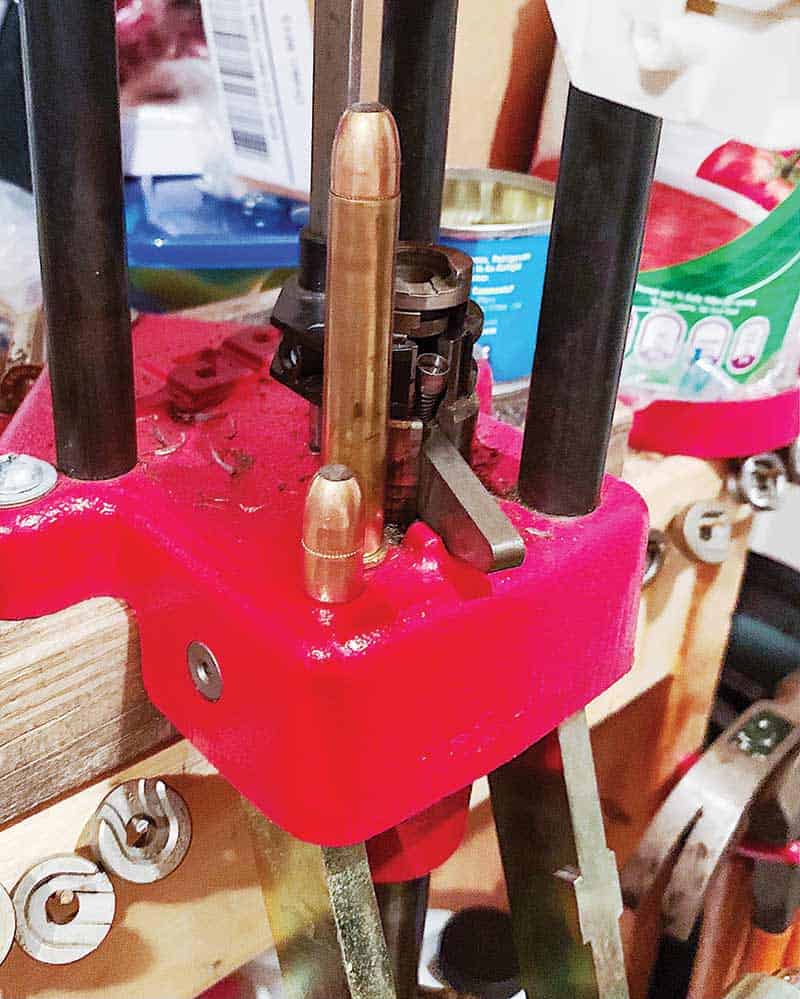Category: Ammo
The AK-630
NORTHERN PRECISION’S .405 WINCHESTER SLUGS
SOLVE ALL YOUR PROBLEMS WITH ‘BIG MEDICINE’
A REAL DEAL
The .40 S&W Lost Its Charm.
This Means Bargains!
By Massad Ayoob
If you’ve been following handgun trends the last few years, you’ve noticed many police departments are abandoning the .40 S&W, mostly for 9mms, and based largely on the FBI’s announcement. The Bureau went back to 9mm from .40 due to ammo improvement in the smaller caliber, as well as slightly higher capacity with the narrower cartridges and the 9mm’s milder recoil. Lower cost of 9mm ammo is a factor, too. The civilian market seems to be following suit: gun dealers I talk to say so, and I’m seeing it in my civilian classes as well.
Last year, my favorite gun shop hangout announced a Christmas sale that included 15 percent off every .40 caliber pistol in the place. I asked the manager why. “Because nobody seems to want to buy .40’s anymore,” he answered.
The real savings are to be found at the used gun counter. One refrain I’ve heard repeatedly from gun shop owners is, “I don’t like to take .40’s in trade. Nobody wants to buy them. I have to offer less on trade-in so I can mark it down if I hope to sell it to another customer at all.” That’s bad news for the original owner and the dealer alike, but good news for the next buyer if they can be comfortable with a .40 S&W pistol.
Yes, ammo will be a bit more expensive. You’ll also have to be more cautious on maintenance. With a GLOCK .40, you want to change your RSA (recoil spring assembly) about every 3,000 rounds. I’ve seen 9mm GLOCKs go way beyond that before they actually needed a new RSA. That said, though, GLOCK RSA’s are cheap.
Recoil of the .40 is notably snappier than 9mm, and some find it more objectionable than .45 ACP, but a lot of that has to do with choice of ammo and recoil’s effect on the shooter is largely subjective anyway. Personally, I can’t tell much difference between the hottest 9mm’s and the lightest .40’s while shooting.
As a rule, .40 S&W generates more energy and slide velocity than 9mm in the same size platform. When the .40 came out in 1990, some models handled it better than others. Hotter loads always “wear” the same platform more than light loads, but some platforms handle it better than others. There are some—the Beretta 92 and the polymer Kahrs—that stand up very well in 9mm, but I for one wouldn’t buy a well-used .40 caliber Beretta 96 or polymer-framed Kahr .40 from the used gun shelf. High volume, intensive .40 shooting isn’t kind.

IDPA Five-Gun Master John Strayer demonstrates control
of .40 caliber S&W M&P.
.40 Pluses
The current “9mm equals .40 for potency” meme is predicated on using the best, latest, highest-tech ammo in 9mm. For almost 20 years now (remember Y2K and the two Obama elections?) we’ve seen ammo droughts in which we were lucky to buy any ammo at all. Let us remember the .40 came out in its original 180-grain subsonic loading at a time when cup-and-core hollowpoints were pretty much state of the art, and it was designed to give you “close to 9mm cartridge capacity” with “close to .45 ACP ballistics” with such ammo. Should shortages come to pass again and limit ammo choices, the same compromise factor that led the .40 to become the most popular police caliber in a few short years will again come into its own.
Speaking of which, many shooters noted during those ammo droughts when we couldn’t find 9mm or .45 on the shelves, most gun shops usually had at least some .40 in stock. Reason enough to have a .40 in one’s battery, methinks.

The .40’s are definitely shootable. This light, compact S&W 4013 delivered
this 60-shot group on a B27 target during timed qualification.

The Speer 165-grain Gold Dot at 1,140 fps, 180-grain Federal subsonic
and 155-grain Winchester Silvertip at 1,200 fps show just part of the
.40 versatility range. The pistol is a 16-shot GLOCK 22 RTF2.
Versatility Factor
In the early 2000’s I carried .40 caliber GLOCKs almost exclusively for almost 3 years. I wore a 16-shot G22 in uniform for the police department and most of the time off-duty and teaching privately, and the 10-shot G27 for backup in uniform and sometimes when I needed fairly deep off-duty concealment. My ammo was primarily the superbly accurate Black Hills 165-grain .40 JHP at a nominal 1,140 fps velocity. Shooting the G22 with it, I won my state’s annual police association shoot 3 years in a row, and a couple of times at local NRA Hunter Silhouette matches, won the iron sight class against target pistols at 100 long paces. The Black Hill’s 165-grain subsonic gave mild recoil in IDPA and GSSF matches.
”
When you look at overall value factor, you have to ask yourself what you’ll be doing, how much you’ll be shooting it, and what budget is at your disposal. The more shooting in your future, the more important lower-priced 9mm ammo will be in the long run.
In the last analysis, the .40 originally skyrocketed to popularity with cops for very good reasons: versatility, street-proven effectiveness, and solid elements of compromise. The way the .40 market is going now, traded-in .40’s may become the best handgun buy since the great wave of trade-in service revolvers.




